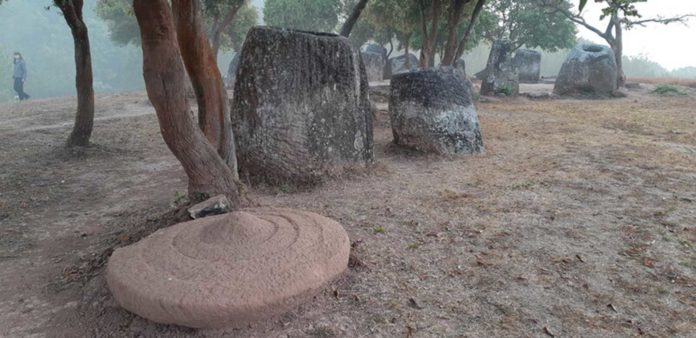The Plain of Jars is a megalithic archaeological landscape in Laos. It consists of thousands of stone jars scattered around the upland valleys and the lower foothills of the central plain of the Xiangkhoang Plateau.
Until now, it has not been possible to estimate when the jars were first placed on the landscape or from where the stone was sourced.
A recent study solved this mystery by analyzing the sediment samples from beneath stone jars. Scientists collected the samples from more than 120 recorded megalithic sites. A technique called Optically Stimulated Luminescence (OSL) was used to determine when sediment grains were last exposed to sunlight.
Scientists found that the jars were likely placed in their final resting position from as early as 1240 to 660 BCE.
Dr. Louise Shewan from the University of Melbourne, Associate Professor Dougald O’Reilly from the Australian National University (ANU) said, “With these new data and radiocarbon dates obtained for skeletal material and charcoal from other burial contexts, we now know that these sites have maintained enduring ritual significance from the period of their initial jar placement into historic times.”
Scientists completed their excavations in March 2020, revisiting Site 1 (Ban Hai Hin). The site revealed more burials placed around the jars. It also confirms earlier observations that the exotic boulders distributed across the site are markers for ceramic burial jars buried below.
The study presents recent radiocarbon results for site use and also introduces geochronological data determining the likely quarry source for one of the largest megalithic sites.
Scientists are now looking forward to obtaining further samples from other sites and from across the geographic expanse of this megalithic culture to understand better these enigmatic sites and the period they were created.
Journal Reference:
- Louise Shewan et al. Dating the megalithic culture of laos: Radiocarbon optically stimulated luminescence and U/Pb zircon results. DOI: 10.1371/journal.pone.0247167
